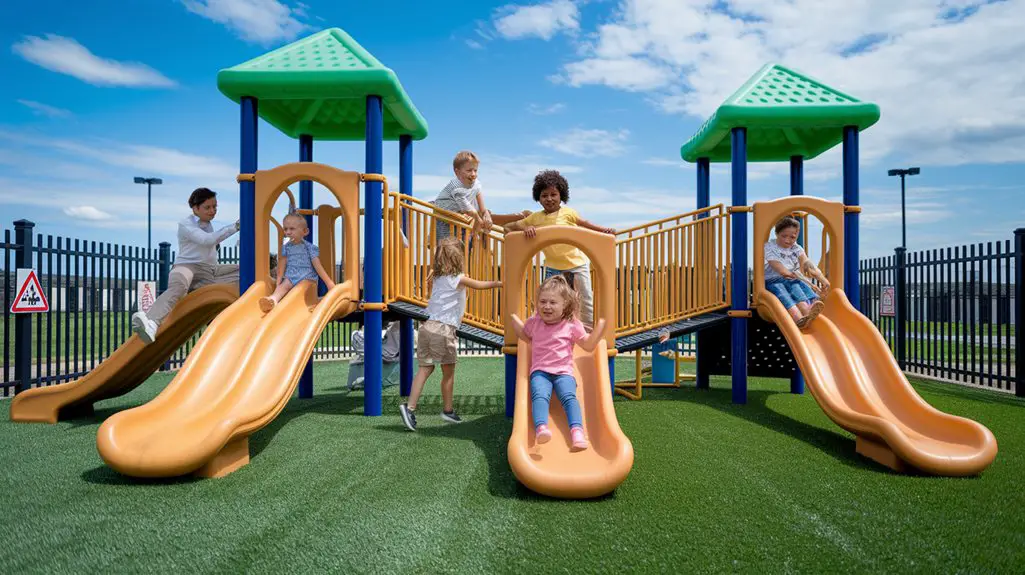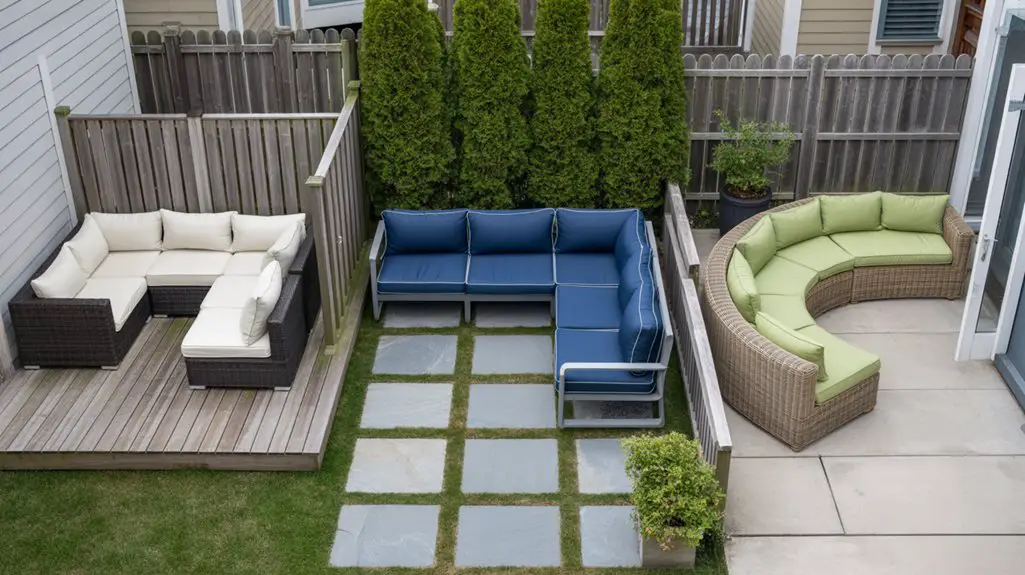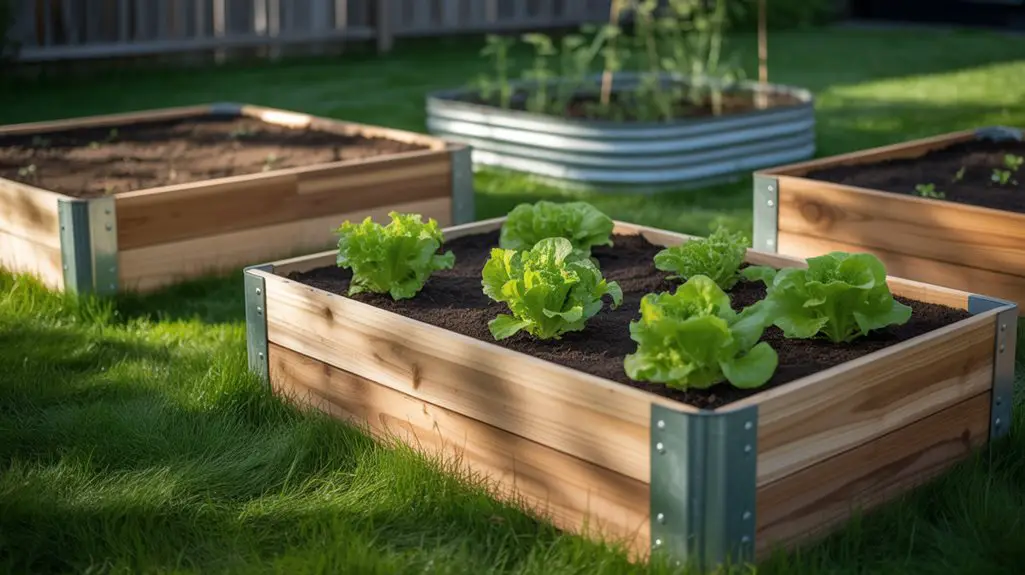Picture a child’s carefree laughter suddenly turning to tears after a preventable playground accident. You can’t eliminate every risk from outdoor play areas, but you can greatly reduce hazards with proper planning and maintenance. As injury rates continue to climb at public and private play spaces, understanding these seven critical safety measures won’t just protect children—it could prevent life-altering accidents and potential liability issues that no parent or facility manager wants to face.
Choose Age-Appropriate Equipment for Different Developmental Stages
When selecting playground equipment for children, it’s crucial to match the features and complexity to their physical and cognitive development.
Toddlers (ages 1-2) need equipment under 32 inches tall with simple climbing features, rounded edges, and limited height differences.
Preschoolers (ages 2-5) can handle moderate climbing structures with guardrails on platforms exceeding 20 inches, small slides, and basic balance beams. Always verify that equipment spacing follows ASTM safety standards—minimum 9-foot clearance between structures.
School-age children (5-12) require more challenging apparatus with 48-inch guardrails on elevated platforms, horizontal ladders, and track rides. Confirm all hardware is recessed, equipment foundations are buried 12+ inches below surface level, and entrapment spaces measure either less than 3.5 inches or more than 9 inches to prevent head entrapment.
Install Proper Shock-Absorbing Surfaces Under Play Structures
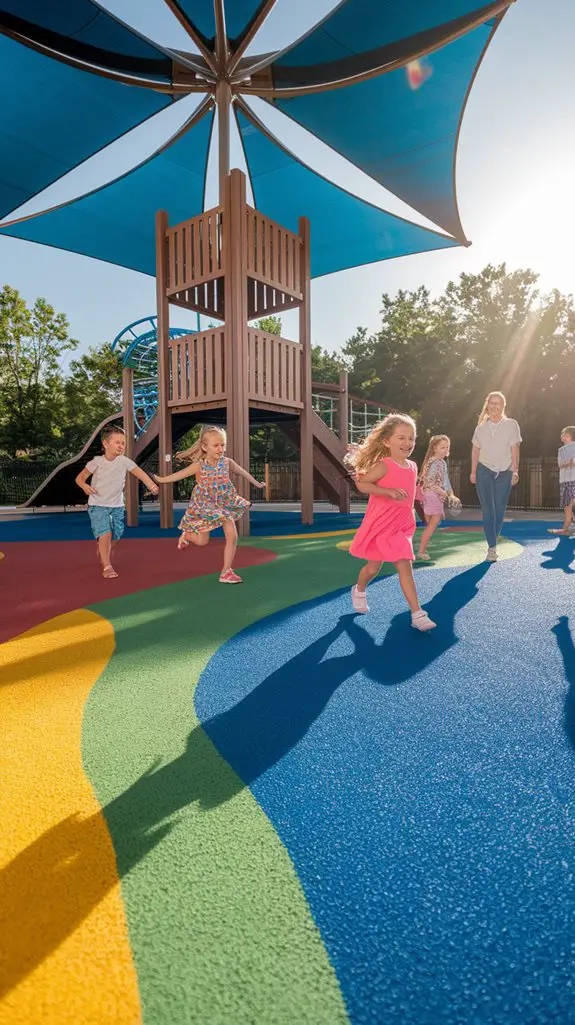
Because falls account for approximately 80% of playground injuries, installing proper shock-absorbing surfacing beneath and around all play equipment is vital for child safety.
You’ll need to maintain a minimum depth of 9-12 inches of loose-fill materials like engineered wood fiber, rubber mulch, or sand extending at least 6 feet in all directions from equipment.
For stationary equipment, create impact zones with 3-4 inches of unitary surfaces like poured-in-place rubber or rubber tiles tested to ASTM F1292 standards.
Guarantee proper drainage beneath all surfacing to prevent material degradation and maintain shock absorption properties.
Always check impact attenuation values regularly, as materials compress over time.
Remember that asphalt, concrete, and hard-packed dirt don’t provide adequate fall protection and should never be used under playground equipment.
Maintain Regular Safety Inspections and Repairs
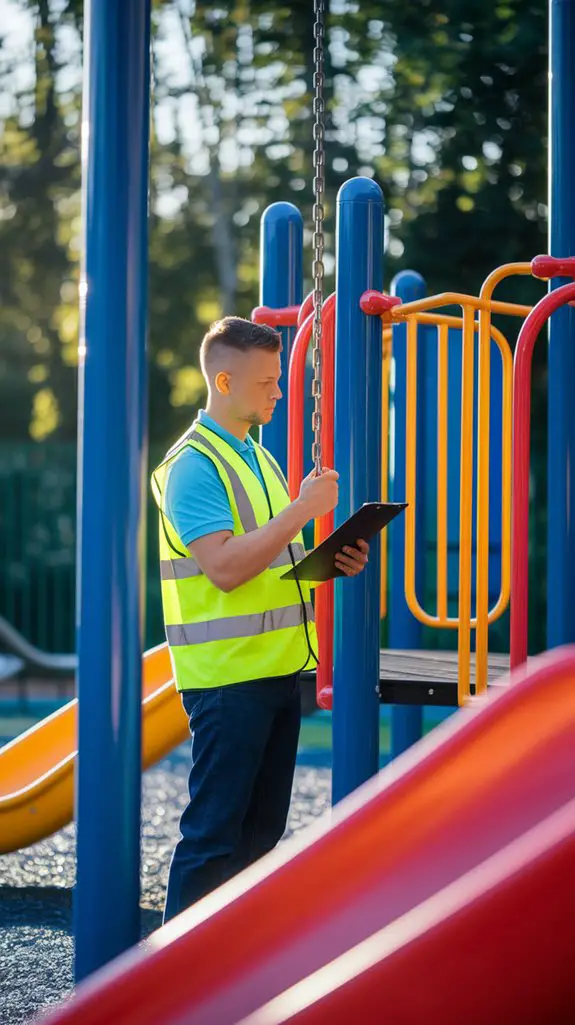
Three distinct types of playground inspections should form the backbone of your maintenance program: daily visual checks, monthly operational inspections, and annual extensive assessments. Document all findings and address hazards immediately to prevent injuries. Additionally, consider how backyard wildlife can contribute to natural pest control solutions in outdoor play areas.
| Inspection Type | Key Elements | Frequency | Personnel |
|---|---|---|---|
| Visual | Broken parts, vandalism, debris | Daily | Staff/Teachers |
| Operational | Hardware tightness, structural integrity | Monthly | Maintenance Staff |
| Extensive | Surface depth, foundation stability | Annual | Certified Inspector |
| Special | After storms, vandalism incidents | As needed | Maintenance Staff |
Don’t delay repairs—even minor issues can escalate into serious hazards. Create a maintenance log tracking all inspections, identified problems, and completed repairs. This documentation serves as essential evidence of your diligence should accidents occur and provides historical data for planning equipment replacements.
Create Clear Boundaries and Visibility Throughout the Play Area
Establishing clear physical boundaries around playground zones serves as a fundamental safety measure that prevents children from wandering into hazardous areas.
Well-defined perimeters using fencing, landscaping, or physical barriers create safe containment while maintaining visibility throughout the play space. You’ll need to strategically design these boundaries to balance security with supervision.
- Install fencing at least 4 feet high with self-closing, self-latching gates that children can’t manipulate.
- Maintain clear sightlines by trimming vegetation to 30 inches or lower and positioning equipment to eliminate blind spots.
- Use contrasting colors for boundary markings and demarcation zones between different play activities.
- Incorporate adequate lighting (minimum 10 foot-candles) throughout the play area for extended use during dusk hours.
Ensure Adequate Shade and Sun Protection Measures
While visibility and boundaries protect children from physical hazards, sun exposure presents another significant risk in outdoor play environments.
Install permanent shade structures like canopies, pergolas, or strategically planted trees over high-use play areas. These should cover at least 50% of the play space, particularly equipment with metal or plastic surfaces that can reach dangerous temperatures above 120°F. Incorporating stylish shade solutions can enhance the aesthetic appeal of your outdoor space while providing necessary protection.
Supplement fixed shade with portable options such as umbrellas or shade sails that can be repositioned as the sun moves.
Establish a designated sunscreen station with broad-spectrum SPF 30+ sunscreen, and implement mandatory application protocols every two hours.
Post UV index warnings when levels exceed 6, and schedule outdoor activities before 10 a.m. or after 4 p.m. to avoid peak UV radiation periods.
Implement Proper Drainage and Weather-Resistant Materials
Proper drainage systems represent a critical safety component of any outdoor play area, particularly since standing water creates significant slip hazards and accelerates equipment deterioration.
You’ll need weather-resistant materials that can withstand environmental stressors while maintaining structural integrity throughout seasonal changes.
- Install French drains or subsurface drainage pipes around play equipment to divert water away from high-traffic zones and prevent soil erosion beneath climbing structures.
- Select UV-stabilized plastics and powder-coated metals that resist fading, cracking, and corrosion from sun exposure and precipitation.
- Apply non-slip surfacing materials that maintain traction in wet conditions, such as rubber mulch or specialized porous concrete.
- Incorporate slight terrain slopes (1-2% grade) to naturally channel water away from play zones without creating accessibility barriers.
Additionally, consider using reusable materials for any outdoor furniture or decorations to promote sustainability during your gatherings.
Remove Common Backyard Hazards and Establish Safety Rules
Beyond engineering weather-resilient play spaces, you’ll need to systematically identify and eliminate common backyard hazards that pose risks to children during outdoor play activities.
Remove protruding tree roots, sharp-edged garden tools, and toxic plants like foxglove or oleander. Secure or remove unstable structures, loose wires, and abandoned equipment that could cause entrapment or falls.
Establish clear safety rules with children: no pushing on elevated platforms, proper use of equipment, and designated supervision zones. Implement a “one-at-a-time” policy for slides and swings.
Mark boundaries clearly to prevent wandering into unsafe areas like pools, tool sheds, or compost piles. Consider installing child-proof locks on gates and storage areas containing chemicals, fertilizers, or power equipment.
Conduct weekly inspections using a safety checklist to maintain your hazard-free environment. Additionally, incorporate age-appropriate play areas to ensure that the equipment matches the developmental stage of the children using it.
Conclusion
You’ll foster a safer play environment by implementing these robust safety measures in your outdoor spaces. Maintain vigilance with regular inspections and never compromise on quality surfacing materials. Remember, “an ounce of prevention is worth a pound of cure” when it comes to children’s safety. By addressing potential hazards proactively and establishing clear safety protocols, you’re creating a protective framework that’ll minimize injury risks during outdoor play.

